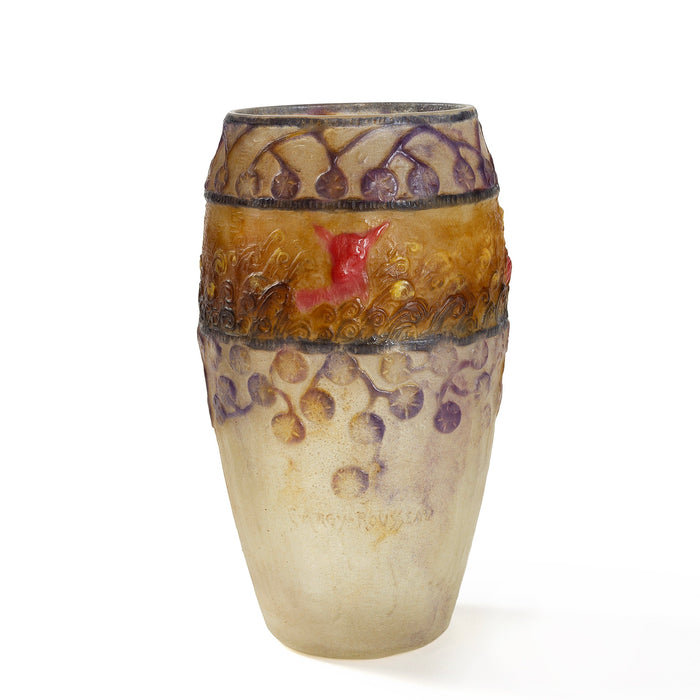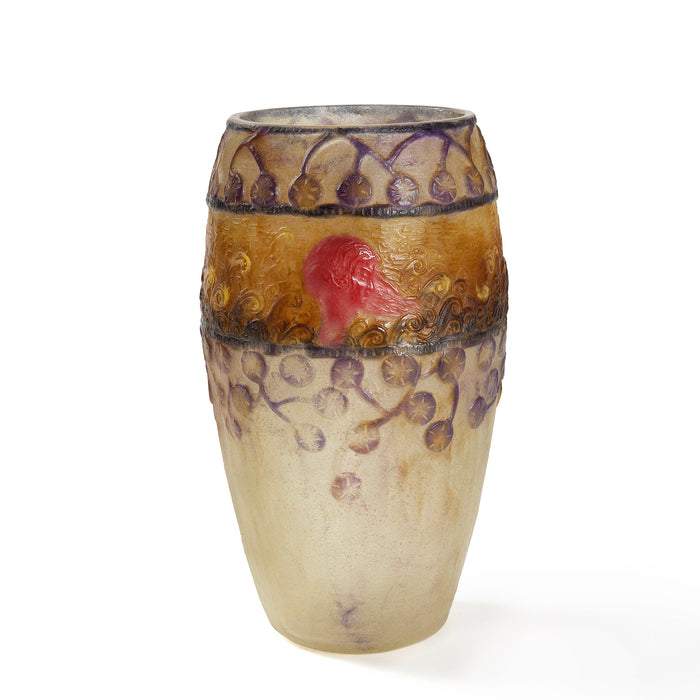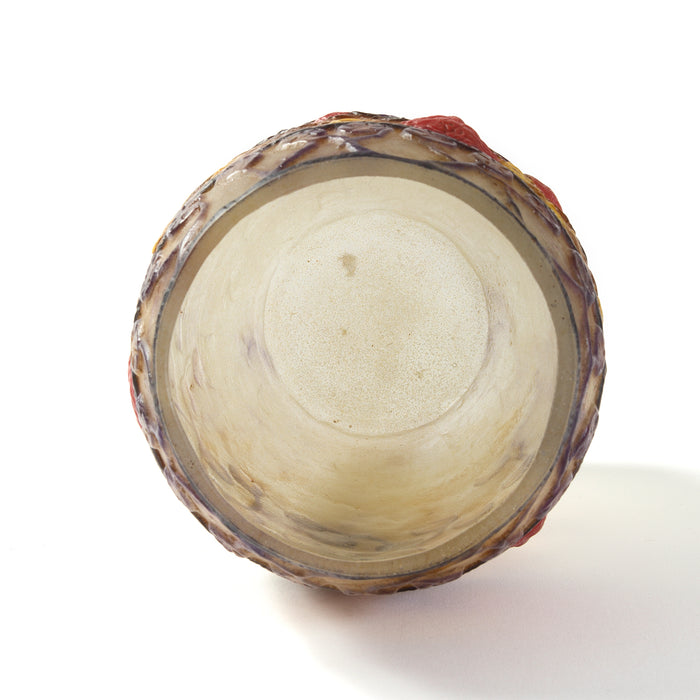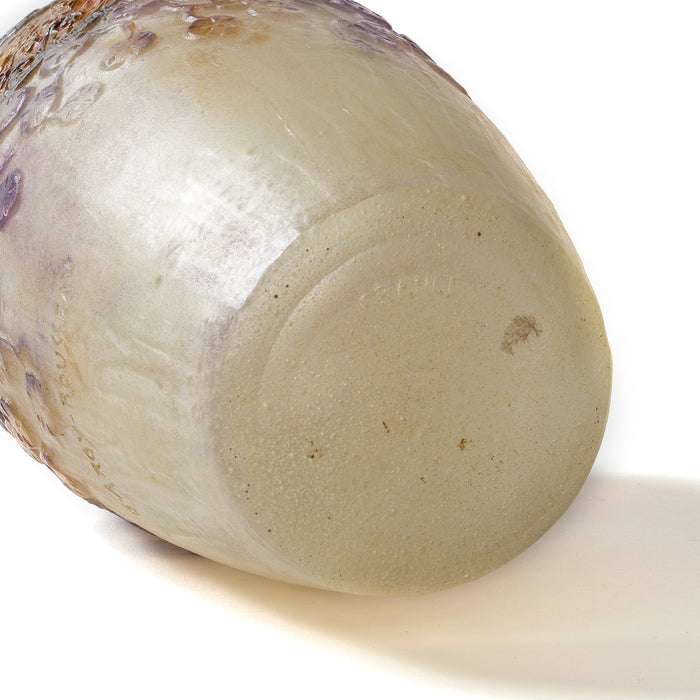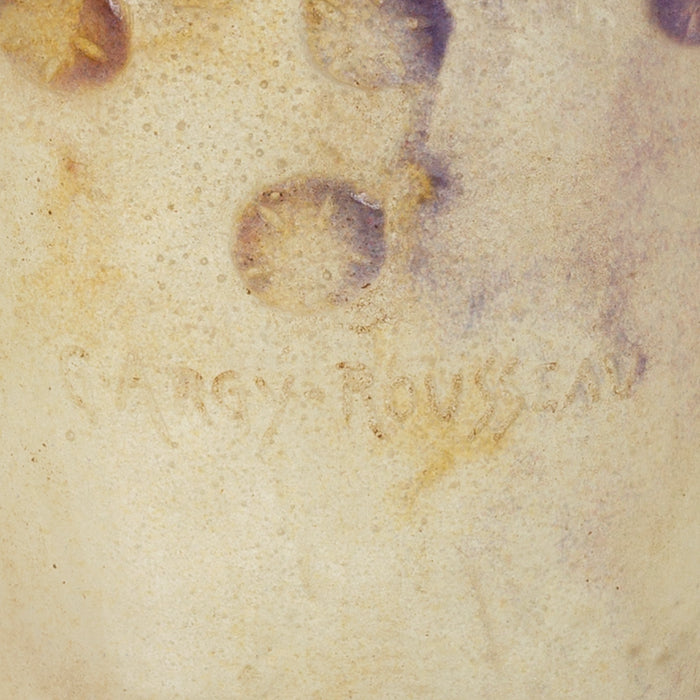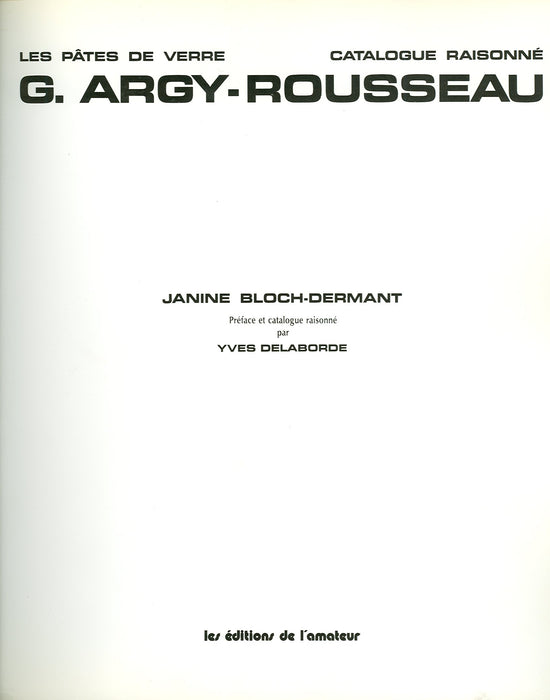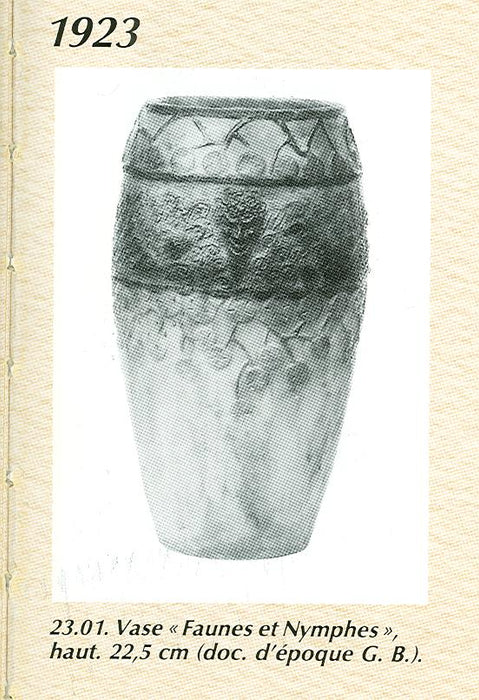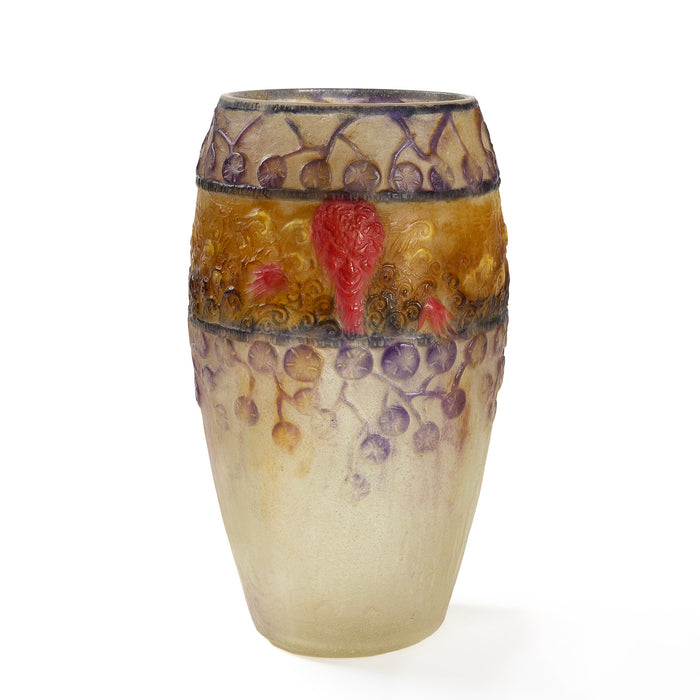
Gabriel Argy-Rousseau "Faunes et Nymphes" Vase
A French Art Deco glass pâte-de-Verre vase, "Faunes et Nymphes," by Gabriel Argy-Rousseau, decorated with a frieze of a satyr, fawn, and nymph. These mythological figures are submerged in a field and bordered by stylized “Monnaie du Pape” leaves. The frieze alludes to the prevalent nineteenth-century theological belief that Moses and Bacchus were one and the same. These beliefs were held by many erudite theologians, prominent freemasons, and bourgeois men at the time.
In this understanding, Bacchus was an Egyptian man that delivered his soldiers across the desert, and was thenceforth worshiped as a God across the Near East. According to this legend, Bacchus and his army were led back by the lamb, Aries, to pleasant meadows, and to the springs which watered the Temple of Jupiter, Ammon (Libya.) Within the context of the vase, the lamb is Aries, the lamb of God and the fauns and nymphs (maenads) are the followers of Bacchus.
- Product Details
- Curator's Notes
Item #: G-20444
Artist: Gabriel Argy-Rousseau
Country: France
Circa: 1923
Dimensions: 9" high x 5" diameter
Materials: Pâte-de-verre glass
Signed: ''G. Argy-Rousseau”. Incised to underside ‘France’
Literature: Pictured in: G. Argy-Rousseay, Les Pâtes de Verre, catalogue raisonné, by Janine Bloch-Dermant, page 191, fig. 23.01.

